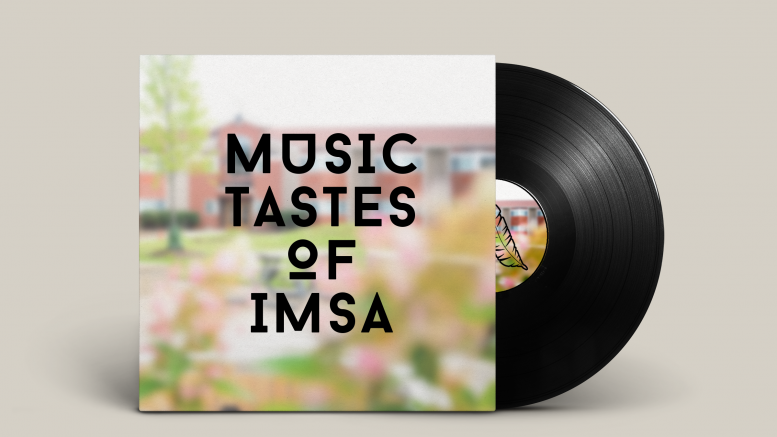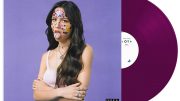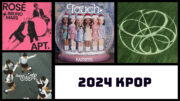This past semester, the Acronym passed the aux cord to the IMSA campus to find out what students are listening to. Over 180 students responded to the survey, providing a wide variety of data on their music tastes and listening habits. Now, at long last, we’re happy to present our findings!
First, it’s important to recognize the relevance of music on campus. While IMSA is a STEM school, it’s clear many students value music greatly, listening to music for many hours a day. Below is a chart depicting the average amount of time spent listening to music every day, divided up by graduating class.
As shown above, the majority of IMSA students listen to music for more than two hours a day. Applying this to an IMSA population of 600 students, give or take, that’s around 8,400 hours a week spent listening to music. Yet many students average more than 3 or 4 hours of listening to music a day, potentially spending more time listening to music than some of their peers spend sleeping. This is particularly true for the class of 2018, with more than a fifth of the senior class reporting listening to more than 4 hours of music a day. Interestingly, the data seems to indicate an increase in time spent listening to music as students progress through their IMSA careers; about half of the class of 2020 listen to music for less than 2 hours a day while near two thirds of the class of 2018 listen to music for more than 2 hours a day. While these numbers are likely skewed by the sample population – students that enjoy music may have been more likely to respond to the survey than those who don’t – it’s evident that music is extremely prevalent on campus.
The question is: if students spend that much time listening to music, what exactly are they listening to? How are students spending so much of their time? Perhaps looking at the music genres that students like might provide insight:
Several things immediately stand out in this graph: first, IMSA students almost unanimously dislike country music, with only a mere 7% of campus expressing positive feelings towards the genre, and second, IMSA students are particularly drawn to indie music, with over 60% of respondents reporting they like or love the genre. Aside from that, there is a slight preference towards pop, rap, classical, and R&B music, a slight preference against Asian pop, and general indifference towards rock and roll and electronic music on campus.
Interestingly, when looking at music genre preferences by residence hall, while every hall liked country music the least, there was a lot of variation in the favorite genres of each dorm. On average, 1504 and 1505 like rap the most, while 1506, 1503, and 1501 like indie and 1502 likes pop the most. 1507 likes both classical and indie music the most, and was also the hall with the highest average rating of all music genres, suggesting that perhaps it’s the most musically open-minded hall on campus.
The 10 favorite musical artists on campus provide a different look into what IMSA students like to listen to. We asked student to list their favorite musicians and the 10 most common answers are as follows:
- BTS
- Imagine Dragons
- Chance the Rapper
- Ed Sheeran
- EXO
- Kanye West
- Khalid
- The Weeknd
- Twenty One Pilots
- Childish Gambino
For the most part, this list seems to echo the music genre preferences above; there is representation from a variety of genres, from rap to pop to indie. Additionally, many respondents expressed difficulty in choosing a singular favorite – 20 respondents neglected to answer in some way, shape, or form and many listed several favorite artists – adding to the apparent wide variety of music liked by IMSA students. What’s interesting is the prevalence of Asian pop groups in this list; despite the slight preference against Asian pop, Korean Pop group BTS is one of the favorite artists on campus. This suggests that the genre tends to be polarizing among IMSA students, with it’s own dedicated fan base on campus.
Yet, while all of this provides a clear idea of how IMSA students’ music interests are spread, it doesn’t necessarily give insight into the content of the music IMSA students like. Perhaps looking at the lyrics used by some of the favorite musical artists will highlight the typical subject matter of music that students listen to. I gathered song lyrics from the LyricFind database and performed a statistical analysis (tf-idf) to determine the words most unique to each musical artist. This method weighs words used frequency by one artist but infrequently by every other artist in the database higher, effectively calculating the most important words for each artist.
[slideshow_deploy id=’21504’]
[slideshow_deploy id=’21504′]
Looking at the lyrical content of various liked artists on campus, several common themes occur. For example, the words most unique to Beyoncé – pain, boy, break – echo the lyrics of her various breakup songs and albums, while the words most unique to the Weeknd – girl, fall, baby – seem to echo his more flirtatious lyrics.
Regardless, it’s hard to draw trends across the lyrical content of different artists from the given data. An analysis of the lyrical content of IMSA student’s favorite songs might better reflect their music interests. The above graph compares the words used in the favorite songs of IMSA students to all other songs in the LyricFind Corpus.
Words that fall below the middle line are words more common in songs that IMSA students like while words above the line are words more common in songs that they don’t. The color gradient is based off of the ratio of the frequency in IMSA songs to non-IMSA songs. For example, a dark blue word would be 4 times more likely to appear in a song that IMSA students like than one that they don’t. In this way, we can determine the words most likely to appear in a songs that IMSA students listen to, in order of decreasing frequency: hang, lives, hair, mean, ooh, making, ah, pick, sitting, and yours. On the other hand, the words least characteristic of IMSA songs, in order of increasing frequency are: yo, together, would, mine, back, done, start, two, he, and running.
This demonstrates the difference in lyrical content between the songs that IMSA students listen to all other songs, but is there a divide in lyrical content among IMSA students? Perhaps the easiest data point to compare IMSA students on is gender; there is a near even gender divide on campus. The chart above compares the frequency of words appearing in songs that students in girls halls (1502, 1503, 1506) like versus songs that students in boys halls (1504, 1505, and 1507) like. 1501 was omitted from the data because it is co-ed and, unfortunately, due to the limitations of the data collected, only binary genders were used.
Words that fall below the middle line are “more boys hall” words and those that land above the line are “more girls hall” words. The color gradient is based off of the ratio the frequency in boys hall songs to girls hall songs. For example, a dark blue word would be 4 times more likely to appear in a song that IMSA males like than one that IMSA females like. Thus, the “most feminine” words on campus are: wind, wonder, tear, taste, done, such, smile, off, now, and worth, and the “most masculine” words are: clothes, taking, deep, happy, ready, called, watch, floor, talking, and thought.
But at the end of the day, it’s not the differences in our music tastes that’s important, but the ways in which music brings us all together. From the Asian pop haters to the BTS fans, the phone listeners to the laptop listeners, the Spotify users to the Apple Music users, the one commonality among all respondents was that they listened to music in some capacity in an average day. From the responses, one thing is certain: music is a powerful force on campus, serving as motivation to work out, a tool for productivity, a backdrop to hanging out with friends, a thing to sing and dance to, and, importantly, something that many IMSA students want to share with others. This article is a step in that direction, an expression of the songs that our peers are listening to and an opportunity for students to share songs and musicians that are important to them. Keep on listening and keep sharing, IMSA.
If you want to listen to the favorite songs of students that responded to the survey, check out the Spotify playlist here.






Be the first to comment on "Music Tastes of IMSA!"